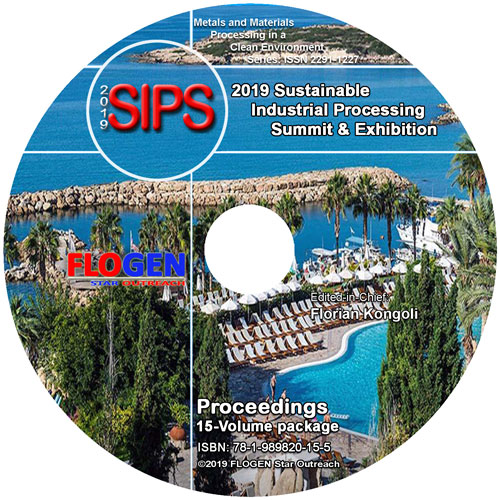2019-Sustainable Industrial Processing Summit
SIPS2019 Volume 8: Usui Intl. Symp. / Advanced Sustainable Iron and Steel Making
| Editors: | F. Kongoli, P. Assis, M.C. Gomez-Marroquin, S. Kitayama, H. Konishi, A. Murao, S. Nomura, H. Ono, H. Saxen, K. Seto, J.I. Tani |
| Publisher: | Flogen Star OUTREACH |
| Publication Year: | 2019 |
| Pages: | 250 pages |
| ISBN: | 978-1-989820-07-0 |
| ISSN: | 2291-1227 (Metals and Materials Processing in a Clean Environment Series) |

CD shopping page
Mathematical Modeling of the Shaft Furnace Process for Producing DRI Using Self-Reducing Pellets
Jose Adilson de Castro1; Marcos de Campos1; Elizabeth Oliveira2; GIULIO ANTUNES DE MEDEIROS3;1UFF - FEDERAL FLUMINENSE UNIVERSITY, Volta Redonda, Brazil; 2CENTER FOR TECHNOLOGICAL EDUCATION CELSO SUCKOW DA FONSECA, Valenca, Brazil; 3UFF-PROGRAMA DE POS GRADUAçãO EM ENGENHARIA METALURGICA, Volta Redonda, Brazil;
Type of Paper: Invited
Id Paper: 200
Topic: 2
Abstract:
The shaft furnace process is widely used to produce DRI from pellets and lump ore. One of the largest shortcomings of the process is the need for a reforming gas station for producing reducing gas. This study proposes the enhancement of the efficiency of the process using self-reducing burden with poor reducing gas. A numerical model based on transport equations of momentum, energy and chemical species for gas and solid phases is proposed to simulate the inner phenomena in the direct reduction of the shaft furnace process for producing direct reducing iron (DRI). The model is verified using industrial data of productivity, raw materials and final composition of the DRI product. The model is used to evaluate operational practices using new raw materials and composition of reducing gas in the process. Five cases were considered which correspond to available raw materials and operational conditions on the process. The effects on the gas and solid inner temperature, pressure and phase compositions distributions are quantified. The simulation results indicated that good agreement for overall parameters of the process could be achieved. Afterwards, detailed features of the inner conditions of the process are predicted.
Keywords:
CO2; Emissions; Modeling; Optimization;References:
[1] CASTRO JA, NOGAMI H, YAGI J. Numerical analysis of multiple injection of pulverized coal, prereduced iron ore and flux with oxygen enrichment to the blast furnace. ISIJ International, v. 41, n. 1, p. 18-24, 2001.[2] CASTRO JA, SILVA A.J, SAZAKI Y, YAGI J. A six-phases 3-D model to study simultaneous injection of high rates of pulverized coal and charcoal into the blast furnace with oxygen enrichment. ISIJ International, v. 51, n.7, p. 748-758, 2011.